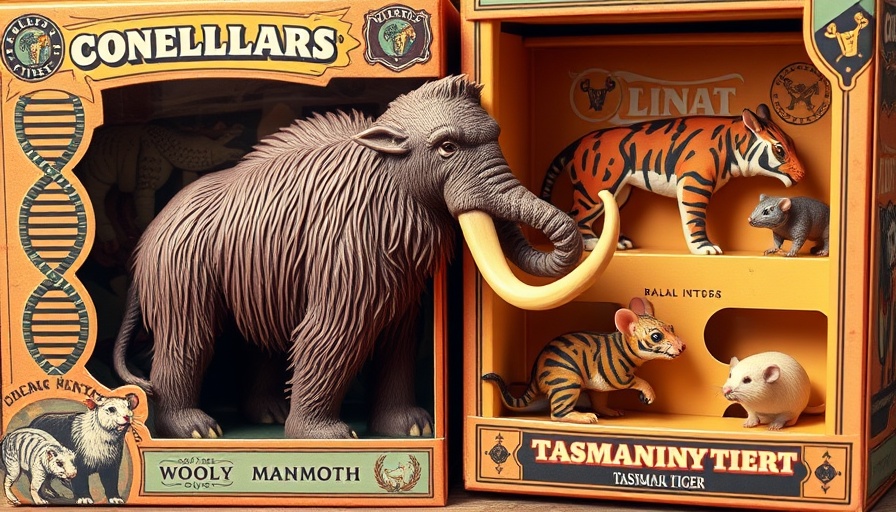
Jurassic Patent: How Colossal Biosciences is Changing the Future of De-Extinction
Imagine a world where the woolly mammoth roams the earth once more. This is not just a fantasy, but a mission that Colossal Biosciences is intent on making a reality. This Texas-based startup is at the cutting edge of biotechnology, working to revive species that have been lost to time. However, their ambitions go beyond mere resurrection; they seek to patent these creations, raising profound ethical and ecological questions.
The De-Extinction Dream
Colossal has raised more than $400 million to fund its de-extinction efforts, with high hopes of using gene editing to transform Asian elephants into creatures that resemble the woolly mammoth. Ben Lamm, the CEO, envisions these genetic hybrids being introduced in large nature preserves in Siberia. By recreating the ecosystem role of the mammoth, Colossal believes there is a tangible benefit: restoring permafrost to trap greenhouse gases, thereby contributing to the fight against climate change.
Patenting the Unthinkable: The Ethics of Ownership
The ambition to patent genetically altered animals is unprecedented and opens the floodgates for complex ethical dilemmas. Lamm argues that holding such patents would allow Colossal to control the deployment of these species in the wild, which he sees as necessary for conservation efforts. But this has raised alarm among bioethicists who worry that this could set a dangerous precedent for owning genetically engineered life forms.
According to experts, this move could establish a monopoly over not just the genetic material used but also the rights to these resurrected species. Cassie Edgar, a partner at a prominent law firm, notes that patenting the DNA of extinct creatures could redefine conservation laws and wildlife protection.
Historical Context of Genetic Patents
The practice of patenting genetically modified organisms began with the landmark Supreme Court ruling in 1980, which allowed patent rights to cover virtually any biological creation. Since then, various genetically modified animals have been patented, including the OncoMouse and transgenic pigs. However, Colossal’s venture into patenting extinct DNA could push legal boundaries even further.
Financial Implications and Business Models
Colossal’s pursuit of patents is also driven by potential financial gains. The company claims that each woolly mammoth could generate up to $2 million through carbon capture initiatives alone. Moreover, the success of bringing back iconic species like the dodo could attract tourism revenue to regions where these species are reintroduced.
Counterarguments: The Risks of De-Extinction
While the idea of resurrecting extinct species may sound appealing, there are significant counterarguments to consider. Critics argue that the ecological consequences of introducing genetically engineered animals can be unpredictable. The balance of ecosystems is delicate, and introducing a new, modified species could lead to unforeseen consequences that might disrupt existing habitats.
Furthermore, many ecological experts assert that resources directed toward de-extinction could potentially be better spent on conserving existing endangered species or restoring habitats that are currently under threat.
Future Predictions: A World Changed by De-Extinction
Looking ahead, the concept of de-extinction raises questions about humanity's role in nature. As technology progresses, the power to create and modify life could ultimately require more rigorous scrutiny. The legal, ethical, and ecological ramifications of such power could redefine what it means to conserve biodiversity.
As we contemplate the return of species like the woolly mammoth, we are reminded of the broader question: should we aim to resurrect the past, or should we focus on preserving the future? The discourse surrounding Colossal Biosciences will only grow more complex as they move forward with their ambitious plans.
Conclusion: The Path Forward
As technology progresses, the ability to intervene in natural processes invites both exciting possibilities and cautionary tales. The idea of patenting biological creations invites rigorous discussion that intertwines technology, morality, and ecology in ways we are only beginning to understand.
While the resurrection of the woolly mammoth may inspire awe and wonder, it also demands that we meticulously consider the implications of such groundbreaking advancements. As stakeholders in our planet's future, it is vital to engage in this dialogue with both ambition and caution.
 Add Row
Add Row  Add
Add 
 Add Element
Add Element 

Write A Comment